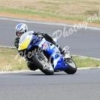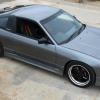RB25/VG30 hybrid highflow Turbo?
Announcements
-
Similar Content
-
Latest Posts
-
I'm far from an expert, but for sticking bits of metal together occasionally I got a MIG, the biggest one I could get with a 10a plug (because while I have some 15a GPOs around, they are not everywhere). Also, because I get through SFA, I just buy the small disposable gas bottles at Bunnings, I'm not opening a BOC account to get through 1/10th of a full size bottle each year
-
Ignore the BOV / recirc valve question. You have an NA and shouldn't have one. If there magically is one though... It should be removed, though it shouldn't really effect it in the way one will for a turbo motor with it venting to atmosphere while running an afm.
-
BOV = Blow Off Valve. Better referred to as compressor bypass valve on stock RBs.
-
This is the stuff me make ourselves. But this seems like a cracked idea.
-






Recommended Posts
Create an account or sign in to comment
You need to be a member in order to leave a comment
Create an account
Sign up for a new account in our community. It's easy!
Register a new accountSign in
Already have an account? Sign in here.
Sign In Now